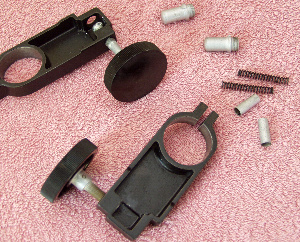 |
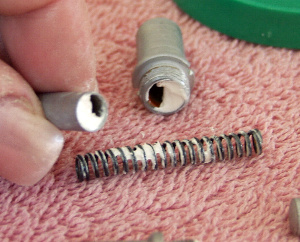 |
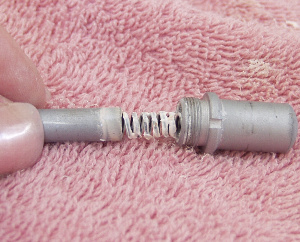 |
| The first stage of rebuilding was the RA and DEC
clutches and slow motions. Here are the parts laid out after cleaning and
painting. |
Pack the spring pusher assemblies with lithium grease
and make sure the spring itself is well greased. |
Insert the spring into the piston at one end and the
cylinder at the other end. |
|
|
|
 |
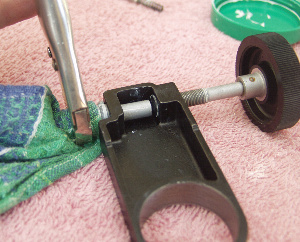 |
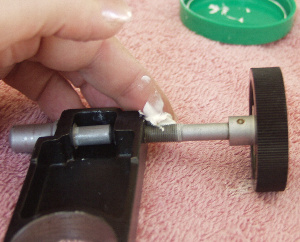 |
| Now insert the assembled spring pusher and piston
assembly. This is easier if you unwind the slow motion knob as far out as
possible. |
Tighten the spring assembly cylinder using some grips.
Its best to place a soft cloth between the grips and the component for this to
avoid the metal finish being damaged. |
Finally dab a little grease onto the slow motion
controls threads and wind it in to the mount to fully lubricate the
threads. |
|
|
|
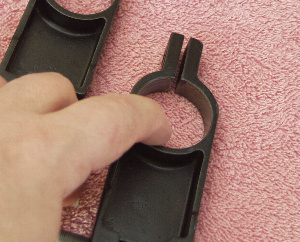 |
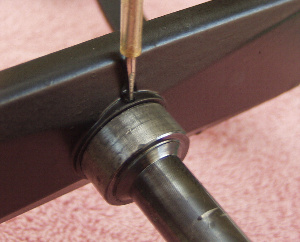 |
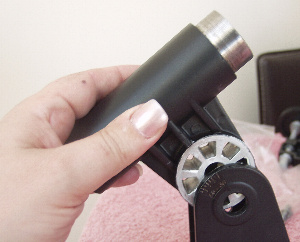 |
| A tiny smear of grease should be added to the inner
surfaces of the clutch assembly where it mates with the mount. Too much will
cause the mount to slip when locked. No grease at all will make the mount bind.
You need just very thin layer of grease here. |
Now reassemble the mount cradle/saddle to the DEC
spindle. Screw this into place and then tighten down the small lock screw. Do
not overtighten this. |
Replace the main DEC housing into the mounts altitude
fitting. Note that the DEC bearing faces were masked during painting. |
|
|
|
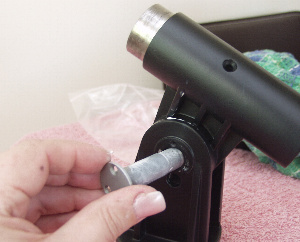 |
 |
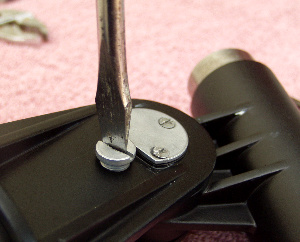 |
| Replace the main altitude bearing spindle. |
Replace the three small screws in the altitude bearing
spindle. |
Replace the lower nut into the altitude assembly. |
|
|
|
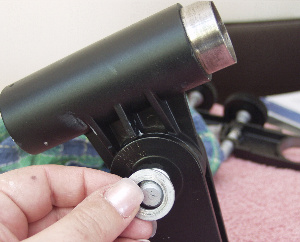 |
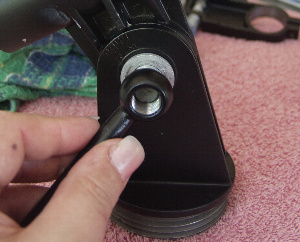 |
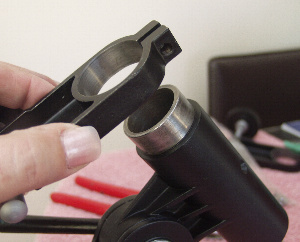 |
| Replace the steel washer onto the main altitude
spindle. |
Replace the altitude locking lever and tighten
down. |
Replace the RA slow motion/clutch assembly over the DEC
main housing. |
|
|
|
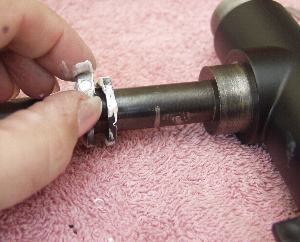 |
 |
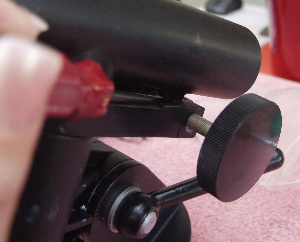 |
| Replace the small square nut on the RA spindle between
the two collars. In this picture this has been greased. |
Grease the RA spindle on its bearing faces. |
Now insert the RA spindle into the mount making sure
that the tag on the RA casing mates up with between the spring pusher/piston
and the slow motion control. You will find this easier by unwinding the slow
motion control as far as possible and using a thin bladed screwdriver to press
open the spring pusher. |
|
|
|
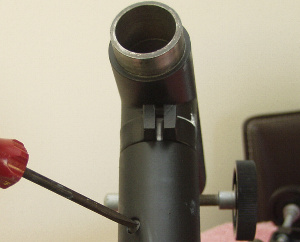 |
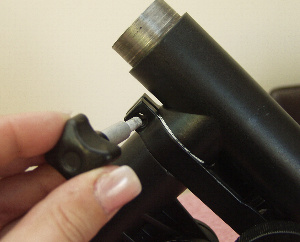 |
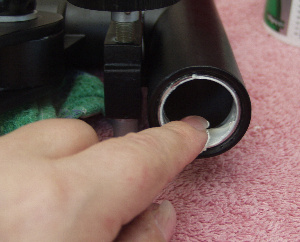 |
| Replace and tighten down the screw that locates to the
small square nut on the RA spindle. |
Replace the RA lock knob. |
Apply a small smear of grease to the inner face of the
DEC housing. |
|
|
|
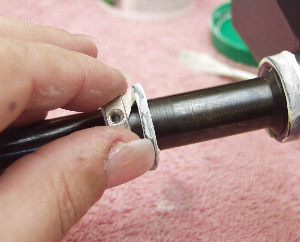 |
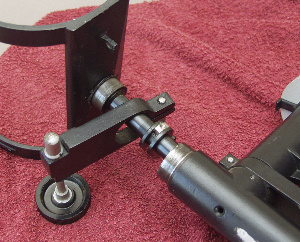 |
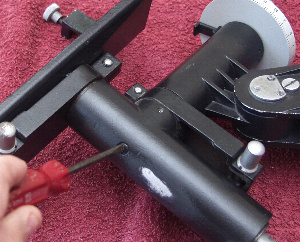 |
| Replace the small square nut on the DEC main
spindle. |
Place the DEC spindle into the DEC slow
motion and clutch assembly and insert it into the mount. Make sure the spindle
is greased on its bearing faces prior to assembly.
Note this picture was taken in the strip down phase as the rebuild
picture was faulty. |
Use the same technique to fit the DEC slow motion and clutch as you
used with the RA assembly to make sure the tab on the cradle is mated correctly
to the slow motion controls. Now replace the screw that locates to the small
square nut on the DEC spindle.
Note
this picture was taken in the strip down phase as the rebuild picture was
faulty. |
| |
|
|
 |
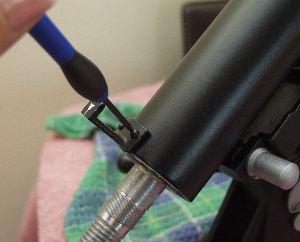 |
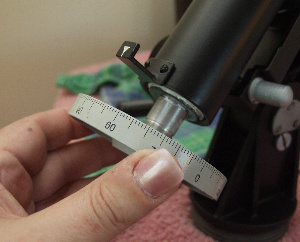 |
| Replace the DEC lock knob. |
Replace the DEC index scale marker but do not tighten
the screws down yet. |
Replace the DEC setting circle. |
| |
|
|
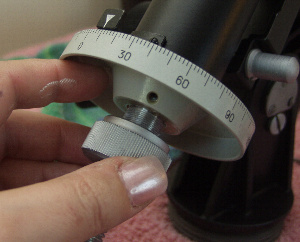 |
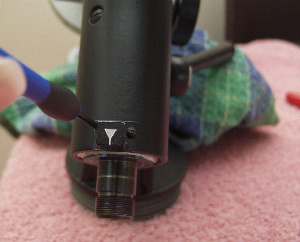 |
 |
| Replace the DEC knurled spindle main nut. Once this is
done you can adjust the index marker so that it is close (but not in contact
with) to the setting circle and tighten down the screws holding the index
marker to the mount. |
Replace the RA index scale marker. |
Replace the RA setting circle |
| |
|
|
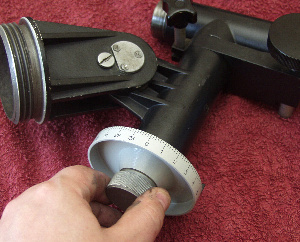 |
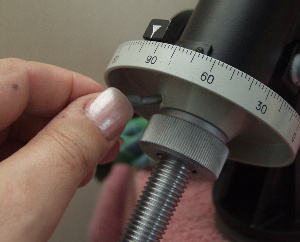 |
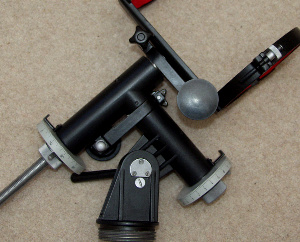 |
Replace the RA knurled main spindle
nut.
Note this picture was taken in
the strip down phase as the rebuild picture was faulty. |
Replace the setting circle locking nuts on both setting
circles. |
The finished article looking better than new. New felts
have been adding to the tube rings and the mount looks and works 100% better
that before. |
| |
|
|